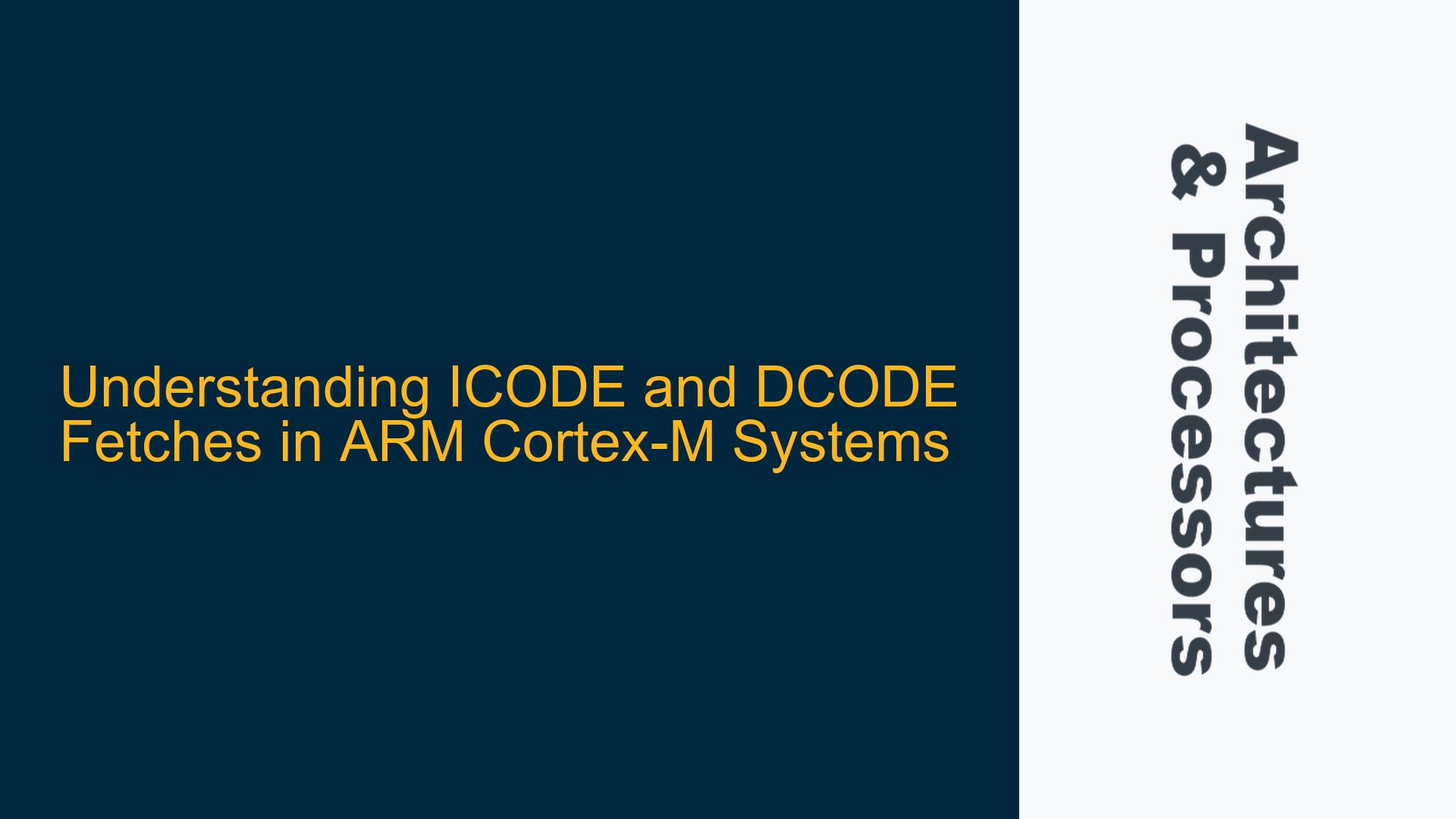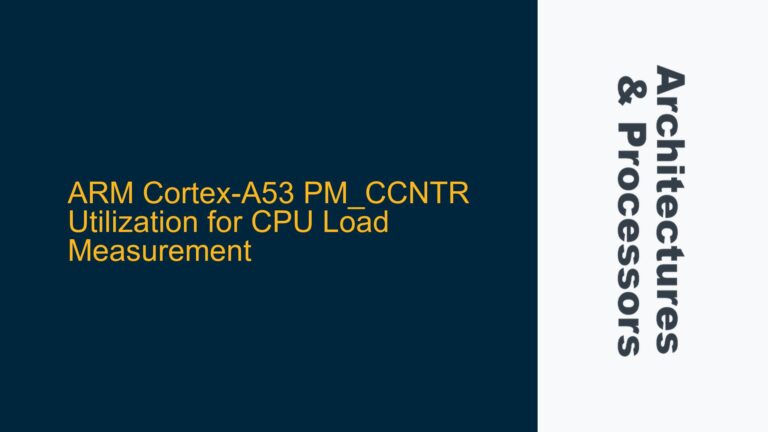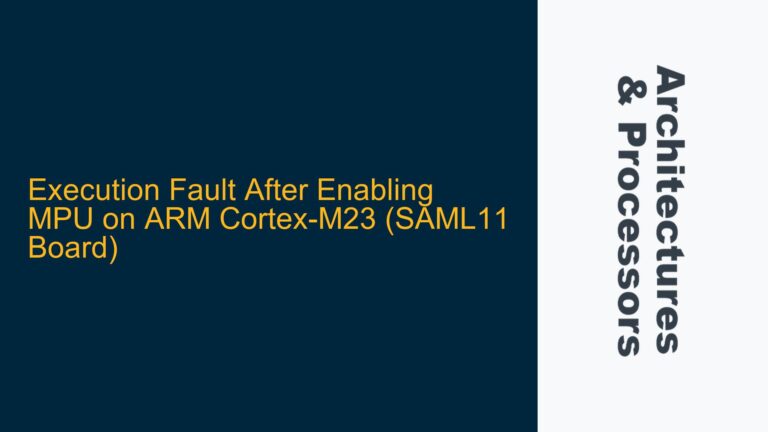ICODE and DCODE Fetch Behavior in ARM Cortex-M Systems
In ARM Cortex-M systems, the ICODE and DCODE buses are critical components of the memory interface architecture. The ICODE bus is primarily responsible for fetching instructions from memory, while the DCODE bus handles data accesses. Both buses can access the same memory range, such as FLASH memory, but they serve distinct purposes in the execution pipeline. The ICODE bus fetches the instructions pointed to by the Program Counter (PC), which are typically assembly instructions or machine code. On the other hand, the DCODE bus is used for fetching data, which can include read-only data declared as constants in C or other programming languages.
In a typical program, the DCODE bus fetches data that is stored in FLASH memory, such as constant variables or lookup tables. These data elements are often declared with the const keyword in C, ensuring they are placed in the FLASH memory segment by the compiler. However, variables that are read-write (RW) are typically stored in SRAM, and their accesses are handled by the system bus (e.g., AHB or AXI) rather than the DCODE bus. The distinction between ICODE and DCODE fetches is crucial for understanding how the ARM Cortex-M system manages memory accesses and optimizes performance.
The compiler plays a significant role in determining whether data accesses are routed through the DCODE bus or the system bus. When the compiler encounters a constant variable, it places the variable in the FLASH memory segment, and subsequent accesses to this variable are routed through the DCODE bus. Conversely, non-constant variables are placed in SRAM, and their accesses are handled by the system bus. This behavior is influenced by the memory map configuration in the linker script and the compiler’s optimization settings.
Compiler Behavior and Memory Access Routing
The compiler’s behavior in routing data accesses through the DCODE bus or the system bus is influenced by several factors, including the type of data being accessed, the memory map configuration, and the optimization settings. Constant variables, such as those declared with the const keyword in C, are typically placed in the FLASH memory segment by the compiler. These variables are accessed through the DCODE bus, as they are stored in the same memory range as the instructions fetched by the ICODE bus.
Non-constant variables, on the other hand, are placed in SRAM, and their accesses are routed through the system bus. This distinction is important for optimizing memory access patterns and ensuring efficient use of the memory hierarchy. The compiler’s optimization settings can also influence the routing of data accesses. For example, if the compiler is configured to optimize for speed, it may choose to place certain variables in SRAM to reduce access latency, even if they are declared as constants.
The memory map configuration in the linker script plays a critical role in determining where variables are placed in memory. The linker script defines the memory regions for FLASH, SRAM, and other memory segments, and it specifies the placement of code and data within these regions. The compiler uses this information to generate the appropriate memory access instructions, ensuring that data accesses are routed through the correct bus.
Debugging and Optimizing ICODE and DCODE Fetches
To debug and optimize ICODE and DCODE fetches in an ARM Cortex-M system, it is essential to understand the memory access patterns and the behavior of the compiler and linker. One common issue is the misplacement of variables in memory, which can lead to inefficient memory access patterns and increased latency. For example, if a variable that is frequently accessed is placed in FLASH instead of SRAM, it may result in increased access latency due to the slower read times of FLASH memory.
To address this issue, it is important to review the memory map configuration in the linker script and ensure that frequently accessed variables are placed in SRAM. Additionally, the compiler’s optimization settings should be reviewed to ensure that they are configured to optimize for the desired performance characteristics. For example, if the system is optimized for speed, the compiler should be configured to place frequently accessed variables in SRAM, even if they are declared as constants.
Another common issue is the incorrect routing of data accesses through the DCODE bus or the system bus. This can occur if the memory map configuration is not correctly defined in the linker script, or if the compiler’s optimization settings are not properly configured. To debug this issue, it is important to review the memory map configuration and the compiler’s optimization settings, and to use simulation tools to analyze the memory access patterns.
Simulation tools can be used to trace the memory accesses and identify any inefficiencies in the routing of data accesses. For example, if a variable that is frequently accessed is routed through the DCODE bus instead of the system bus, it may result in increased access latency. By analyzing the memory access patterns, it is possible to identify and correct these issues, ensuring that data accesses are routed through the correct bus and that the system is optimized for performance.
In conclusion, understanding the behavior of ICODE and DCODE fetches in ARM Cortex-M systems is essential for optimizing memory access patterns and ensuring efficient use of the memory hierarchy. By reviewing the memory map configuration, the compiler’s optimization settings, and using simulation tools to analyze memory access patterns, it is possible to debug and optimize ICODE and DCODE fetches, ensuring that the system is optimized for performance.






